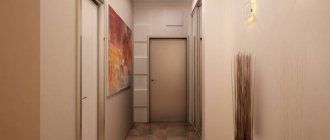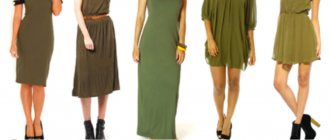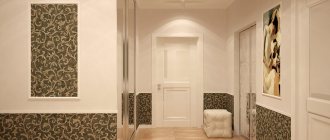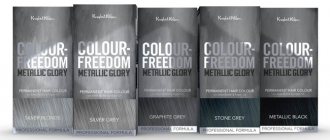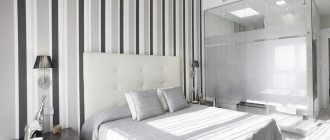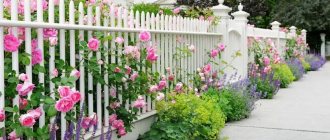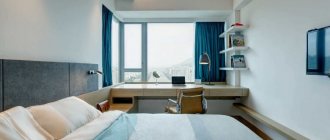Hallway. This room plays a significant role. Already upon entering you can feel the harmony and mood reigning in the house. Here we meet dear guests, friends who have dropped in for a cup of tea. I want to create the perfect interior here. To do this you need to choose the right color.
Since hallways are most often small in size and at the same time they form the first impression of the home, you should approach the issue of their design carefully.
What colors to paint the hallway walls (photo selection)
When choosing color solutions for the corridor, take into account all the nuances, especially the length of the corridor and its layout. Not everyone can boast of a large room. Most often, the hallway is either too small or very long and limited in width. If you like dark shades, especially brown, then the visual width will be reduced even more.
Cool colors are best suited for a small corridor: white, pale chestnut, azure, ivory, silver, haze, light brown, grayish.
When deciding on a color, take into account the area and configuration of the room.
The most acceptable design is light brown and gray. Their highlight is neutrality. What does it mean: a shadow falls on a milky color - a grayish color is formed, and gray in combination with yellow produces a light brown color.
Universal colors, their features
The hallway connects the apartment or house with the outside world. Only the necessary furniture intended for storing clothes is placed in a small area. You can decorate the room by decorating the walls and using a small number of decorative elements.
As the main color, you should choose universal shades that look harmonious in any interior; you can easily match them with bright decor. The main color should occupy about 70% of the entire interior, the number of bright spots should not exceed 30%.
Universal shades that are perfect for hallway design include:
- light yellow;
- beige;
- sand;
- terracotta;
- cream;
- peach;
- mint;
- grey;
- pearl gray;
- coffee with milk;
- lilac.
Gray tones combined with beige, many mirror surfaces, and white accents allow you to create a stylish interior. Gloss and many mirrors visually increase the space. Depending on what effect you want to achieve, you should decide what color to paint the corridor.
Shades of bright colors enliven the interior and give it a mood. Painted mustard walls highlight the neutral beige doors and brown wardrobe. Despite the lack of lighting, the hallway is warm and cozy.
The optimal solution for decorating a hallway is natural shades chosen for the base, and bright spots that dilute the boring design. The living space, the design of which is made in a single color scheme, looks stylish and complete.
The color difference allows you to harmonize the interior, which also gives the interior a sense of dynamics. For this purpose, various combined colors or several shades of the same color are suitable.
Color scheme depending on the interior style
Classic style. Many people follow this direction. It’s not difficult to create – paint or wallpaper is used to decorate the walls. This style is characterized by a wide range of colors, a combination of large elements, images, ornaments, and monotony. In some cases, it is more expedient to decorate the hallway with panels - this is one of the commonly used finishing options today.
When choosing the color of the walls in the corridor, first of all, select washable finishing options.
This style is characterized by the following combination: grayish with light brown, sandy with milky, dark with red, chestnut with red, light purple with light brown, milky with azure.
With a small footage, it is better to choose one of the above tones, and it is better to refrain from designing 3D or large drawings. If you live in a private house, the color should be soft and calm, otherwise it will seem that the walls are pressing. No one will like this feeling.
Whatever color you prefer, either paint or wallpaper should be moisture-resistant and preferably with an anti-fungal coating.
For decoration, use higher quality wallpaper than paper. These include non-woven, glass wallpaper, vinyl, but they also cost a little more than usual.
It is better to decorate the walls in a small hallway in light and warm colors; they will significantly expand the space.
Modern style. You haven’t decided which tone to choose yet, but you want to design it in accordance with fashion trends, the following materials and coatings are suitable.
- Natural and artificial stone of remarkable, colorful colors (rich gray, purple, dark, burgundy, chestnut).
- Red brick with clearly marked seams.
Brick. With its help, you can decorate all the walls in the hallway or apply only partial decoration and create a rather unusual design in the hallway.
- They use paints of pistachio, dark, azure, bluish, scarlet, red, greenish shades. If the hallway is spacious, you can combine colors with soft, neutral tones. Interior and decorative paints are suitable for any style.
- You can separately use dim, soft shades. Of these, light brown, milky, and light yellow are often used.
A dimly lit hallway should be decorated in light colors.
Additional Information. If your main goal is to visually expand the room, then paint or decorate the side walls with the lightest colors or finishing materials. Refrain from large elements, massive pieces of furniture, large niches - this will visually significantly reduce the hallway.
Retro style. Using stone is an acceptable option. Here it is permissible to use stones of different volumes. The main requirement is that the objects have relief outlines, are bulky, and have rigid contours. This will allow the wall covering to look natural, realistic, like in the old days.
Whatever colors of walls, furniture, and interior items you choose, the color scheme should vary within no more than three shades.
A distinctive feature of this direction is the use of natural decoration and established colors. The most suitable colors: light brown, milky cream, chestnut, sand. Contrast and brightness are unacceptable.
As for materials, use wallpaper, paint, and stones that imitate unevenness and wear. Decorative plaster will give the same result. Although it is expensive, it is used sparingly.
The relief surface with various patterns is perfect for decorating any style.
Scandinavian style. This direction is characterized by an abundance of light. It is worth using neutral, soft, cool colors, bright colors are unacceptable. It is recommended to dilute the selected shade.
Stylistic design allows not only to create a fashionable interior, but also to reflect taste preferences.
Don't just focus on pale gray or light brown. Sandy, light yellow, azure, and golden shades are ideal. For a small area, this is the best option that deserves attention.
High tech. This style is no less popular these days. Its key areas include the presence of elements of niches and metal decoration in the hallway.
Uncomplicated and simple types of functional finishing will emphasize the fundamental features of this direction.
The style is characterized by dark tones: dark, greenish, dark azure, silver, etc. The use of stones, wallpapering, and painting are not excluded.
Country style. A few words about the color scheme. Most suitable.
- Dark-brown matte colors, textures with imitation stains are the most acceptable option.
- Light brown and snow-white tones.
- Light yellowish and white rough planes.
- A color and structure combination is recommended.
- The background is better neutral, with the addition of colorful elements - this is necessary.
The room expands with mirrors, arches, and large passages.
Each style is unique and interesting in its own way. Thanks to its features, it helps to create a unique interior.
On a note. If you can’t make a choice on your own, contact a specialist. They will help not only choose a style, but also hide all the shortcomings of the room and create the perfect interior.
Classic style - colors for walls
When you need to design an interior that will remain relevant for a long time, you should give preference to the classic style. This direction is characterized by rigor, elegance and functionality. Natural materials are ideal for finishing and decorating a room:
- Fine wood or stone tiles, such as marble, are suitable for the floor.
- They make stucco on the ceiling.
- It is better to choose plaster cornices.
- For walls, paint with a matte finish, wallpaper with ornaments, and decorative plaster are suitable.
Designers advise painting the walls in the corridor:
- white;
- gray;
- beige;
- olive;
- burgundy;
- brown;
- purple.
The classic style welcomes light and muted colors. Plain wallpaper, Venetian plaster, and paint are suitable for wall decoration. The hallway should be painted in a single color scheme; the material may contain a light pattern or design.
Photo: hallways in a modern style. Modern hallway interior ideas in 2021
Carvings, columns and stucco will help complement the monochromatic design. Also, as decoration you can use natural materials, mirrors, luxurious wall lamps, which will be combined with the main lighting fixtures in the corridor.
In the presented version, the walls are painted with beige paint, and black and white tiles with squares were used to decorate the floor. Mirrored cabinet doors increase the space and, by reflecting the flow of light, create interesting shimmers. To decorate the hallway, we hung a luxurious chandelier and installed a decorative vase in the corner.
Light shades are better than others for decorating a hallway in a classic style. In combination with light furniture and decorative elements, the interior looks luxurious and majestic.
Shades of dark colors can be used for spacious hallways. It is important to provide good lighting that will highlight the chosen wall color or pattern.
The walls of a traditional classic hallway are predominantly light and warm. All details are harmoniously combined with each other; there are many unusual and beautiful decorative elements in the room. Neoclassicism is characterized by a wider range of colors. Contrasting colors and bright details can be used.
Why the corridor should be beautiful
This room needs beautiful decoration no less than other rooms. This is like a “business card” of the house, so you should approach the design thoroughly.
The background and patterns should not be too contrasting in hallways with a large wall area.
In addition, the corridor requires a lot of space for outerwear, shoes and other accessories. But all this must be combined with the decor. There is a large area for it - this is a wall. By decorating this surface, where there is no clothing, you can radically change the atmosphere here.
To transform the area at the front door, consider these points.
- Compactness - the dimensions here are smaller than in other rooms. In this regard, it is worthwhile to correctly approach the placement of the necessary items and create a design that visually expands this area.
- Thoughtfulness. When you return home from work, you want to plunge into comfort. Therefore, the design of the corridor should evoke only positive emotions, and the furniture should be cozy and multifunctional. Consider choosing a place for outerwear, shoes, mirrors to make it convenient.
- Quality. Choose high-quality materials, they will last a long time, but low-grade ones are unreliable and will soon need to be replaced. Pay attention to the moisture resistance of the material and ease of cleaning.
- Beauty. Every room in the house should correspond to this word. If you want to renovate the hallway yourself, work hard on the interior so that it matches the style of the entire apartment.
Make the floor darker than the walls, and the ceiling should be lighter than the floor. In this way, the proportions of the room are visually preserved and the space is not hidden.
Artificial stone in the interior of the hallway
Decorating a wall with stone can significantly transform a hallway, giving it style and practicality. This decorative material is made of gypsum and cement.
Cement-based stone is easy to clean and repaint, it is wear-resistant, does not deform when exposed to moisture, and does not ignite.
Gypsum stones look no less beautiful. The advantages of this product are light weight, ease of processing, lower cost compared to cement artificial stone.
However, gypsum is inferior to cement in water resistance; in the process of washing gypsum stones, you should not use too much liquid. In addition, it is more susceptible to mechanical stress.
Full stone finishing of all walls in the hallway is done in exceptional cases. As a rule, only individual sections and fragments are isolated.
The photo shows examples of traditional finishing:
- window and door openings;
- corners free from furnishings;
- stripes above the baseboard or chaotic on the middle level of the room;
- hanger, shelf for things, rack.
What color is better for the corridor
When starting a renovation, you want to carry out all the finishing work efficiently and choose the optimal design. But sometimes difficulties arise with choosing a color scheme. The best option will be the shade that will be combined with the home decor, interior and color of other rooms.
White. Many are sure that this color is not suitable for the hallway, that it is not entirely practical. Stylists are convinced that entering a white corridor improves your mood, and this is a strong argument in favor of white. In addition, the room visually increases. Of course, everyone finds their own advantages and disadvantages in milky color. But if you really want to decorate the interior this way, you shouldn’t give up your desires.
This wall design will be an excellent option for small or narrow spaces.
Light green. Green and its shades are becoming increasingly popular. When choosing a shade of green, the design you have in mind is also important. The corridor is small, light colors are ideal: light green, mint, grayish green. Appropriate finishing materials and decorative elements should be used.
Light green wall decoration is very fashionable, relevant and modern. With its help you can bring incredible freshness to your interior.
Note! This color is the basic one, and which tone is better to choose, be guided by the footage and shape of the corridor, the type of lighting.
For a large corridor, you can use the brightest colors of green. But you need to be careful, as its excess can cause an aggressive attitude. More saturated green shades are also suitable - darkish green, yellow-green, especially with high ceilings and an original layout.
A wall surface highlighted with an unusual texture, bright color or pattern is a special interior technique that guarantees an excellent result.
The inserts will give a unique effect. It is more correct to perform colorful inserts on a neutral background. This kind of contrast will make the room larger or visually make a large corridor smaller.
Light. Most people prefer the shade of coffee with milk as the most practical. Light brown decoration and furnishings are perfect for different styles. Combines perfectly with dark chestnut, cream, light green.
A well-placed mirror, by adding perspective, will give the room spatial depth and spaciousness.
Let us outline some of the advantages of a light shade.
- Decorating in such colors, including the floor and ceiling, requires fewer lighting fixtures.
- The light color perfectly hides unevenness and masks flaws in planning.
- Ideally combines with all colors, which greatly facilitates the work of stylists.
- With this design, any decorative element looks very impressive.
- Light decoration has a beneficial effect on the nervous system, making the house feel cozy and comfortable.
A good alternative to white is ivory. The shade is rich, goes well with many colors and looks presentable.
Among the disadvantages are the short service life of such a coating and the likelihood of staining the walls with outerwear or shoes. But the moisture- and wear-resistant materials currently produced will help to easily cope with this problem.
Grey. This color has many shades and is considered an excellent additional background for colorful elements used in the interior. Painting the walls in the hallway gray will help make the atmosphere in the room peaceful and also unusual.
It is recommended to give preference to light shades of gray, which will make the room airy, fresh and spacious.
Unlike light, this color is much more practical; it has several shades: asphalt, metal, pearl. They have a positive effect on a person, calm them down, relieve stress. But if there is an overabundance of dark gray in the corridor, it causes melancholy and despondency. Decorative plaster will add variety to such an interior; with its help you can recreate different textures.
Lilac. This color, like others, differs in the variety of palettes. Lavender is classified as a cool shade and is best used in rooms facing the sun.
The lighter color of lavender can be used in rooms where the windows face north.
The soft lilac tone is ideal for minimalist and classic styles. And in any other style it looks very impressive.
Some argue that this color is not suitable for large rooms where we are constantly and it is better to use it in small rooms. One can argue about this. If residents really like this shade and feel comfortable in such a room, it is quite advisable to use it for decoration. But moderation is needed in everything.
Dark. A darkly decorated corridor looks intimidating, especially if the lighting is incorrect. In a narrow room, it is better not to use dark colors. Neither thoughtful design nor proper lighting will help with this. A small corridor can be decorated with a dark-colored rug and a small painting; for furniture, choose a wenge tone - amber-chestnut or dark chestnut with black veins.
Dark walls will become the main accent and will look very elegant, chic and original.
To visually enlarge a dark corridor, it is better not to install interior doors, but to limit yourself to arches. A mirror is also used for this. It is better to choose a wall-mounted and wide one; a built-in one will not give such an effect. Suitable shades for the frame are silver or gold. LED lighting is required along the edges.
Bulky furniture is not suitable for a dark hallway - it makes it heavier. Shelves and hangers should be open; bedside tables should be low. Choose polished, glossy or mirrored items. Install multi-level lighting: chandelier, sconce, along the edges of the ceiling - diode contour strip.
Beige. “Business card” is also what the corridor is called, because its appearance forms an opinion about the owners. Therefore, they try to create a beautiful interior here. But this is complicated by the constant movement in the room, the fact that its area is small, and there is no natural lighting.
Painting the walls gray or beige switches attention from form to content - a small hallway in neutral shades will seem a little larger than it actually is.
The best color for decoration is beige; it will visually enlarge it and add light. Pairs perfectly with all colors. You can easily pick up furniture and decor here. Beige shades will add comfort and harmony to the interior.
What paints should I use?
To use paint and varnish material in a hallway or corridor, it is necessary to pay attention to the basic qualities and characteristics of the paint, since this will ensure long-term operation of the coatings, protect the walls from mechanical loads, the influence of liquids and other contaminants characteristic of this room.
Features of corridors and hallways:
- Location near the front door, which implies frequent sudden changes in microclimate and temperature, drafts. This destroys the coating with insufficient elasticity.
- Outerwear, shoes, umbrellas, and hats are often removed and left in the hallway or corridor. In bad weather, these things are often wet and dirty, which, as a result of moisture coming into contact with the walls, will directly put a load on the surface of the walls located close to the hangers. Paint and varnish coatings must have good wear resistance.
- Through the corridor and hallway, all objects enter the apartment: furniture, other large items. It is rarely possible to apply them without damaging the walls as a result of impact or friction, so the paint must form a durable film.
- Due to the openness of corridors and hallways to other rooms and spaces in the apartment, owners have to come into contact with evaporation from the walls, which should not be toxic or harmful. Intermediate spaces should be painted with paints intended for use in residential buildings.
The hallways are beige. Hallway interior in beige tones
The best paints for decorating walls in hallways and corridors are water-dispersed paint compositions. They have all the necessary properties and are vapor permeable. Let's consider the types of this category of material.
Acrylic
High-quality but expensive paints and varnishes for interior decoration. They are resistant to direct exposure to UV radiation, vapor and moisture permeability, and film strength.
Due to its high drying speed and color retention, regardless of the operating conditions of the room, the paint forms a soft, even coating that can hide even small cracks as a result of painting.
Butadiene styrene
Budget materials that are suitable only for interior work in rooms exposed to moisture, liquids, and other contaminants on the walls. It is necessary to take into account that the paints of this series are not resistant to sunlight.
As a result of prolonged contact with UV radiation, surfaces painted with water-based butadiene styrene paints acquire a pronounced yellow tint.
Polyvinyl acetate
These paint and varnish compositions are cheap, with the most modest moisture resistance indicators. They should be used in rooms where contact with moisture is minimized.
Alkyd enamel
The peculiarity of the coloring composition is the presence of toxins of organic origin. When painting a room, a persistent, very unpleasant characteristic odor is created. To eliminate this effect, you need to intensively ventilate the treated rooms for at least 3-5 days.
You can find odorless alkyd enamels at a higher price due to the composition with polyurethane-based additives.
Photo of dark corridors in the apartment
A dark palette allows you to set a certain shape and mood for the room, as well as impart nobility and sophistication to the interior.
Finishing materials in dark colors will provide an excellent background for furniture items. Such a rich color scheme does not create dissonance in the room and highlights every item and accessory in the room, giving them a clearer look.
Dark walls become an advantageous addition to a corridor in fusion, art deco or other eclectic styles, characterized by bright contrasts and a combination of incongruous elements.
The photo shows a large hallway in dark shades in the interior of the apartment.
It is believed that black shades make the atmosphere gloomy and visually make the room smaller, so such colors would be extremely inappropriate for decorating a small hallway. However, a spacious corridor in black, in combination with well-chosen furniture and proper lighting, will look very fashionable, expensive and elegant.
Dark tones have invaluable beauty, are distinguished by originality and aesthetics. In the design of the corridor, it is important to use deep cobalt, dark blue, complex purple colors or mysterious shades of indigo, which give the enclosed space a certain depth.
Visual correction of the bedroom space: step by step. How to visually enlarge a room
An expressive burgundy color scheme will add special aesthetics and sophistication to the decor.
Hallways in light colors
One of the main advantages of a light color scheme is its ability to visually expand spatial boundaries and make the room brighter and more comfortable.
This palette goes well with all shades. Against the background of a light wall covering, various decor and accent details look more advantageous.
The photo shows the design of a hallway with light walls covered with peach-colored paint.
Pastel colors fill the room with calm, cleanliness and freshness. An entrance hall in soft blue, lilac, pale green or ivory tones always has a well-groomed and pleasant appearance, and also has a warm and homely atmosphere.
Painting the walls a neutral beige or light gray will make a small space feel much larger and larger.
The photo shows the blue and white decoration of a small corridor in the apartment.
Brown corridor
Chocolate color combined with wood texture will create a respectable corridor design. Brown is considered a classic choice for people with conservative tastes.
The most popular color solutions include coffee colors, shades of cocoa or cinnamon, which have extraordinary softness and warmth.
The photo shows brown colors in the design of a spacious corridor.
Hallway in gray tones
The corridor in gray has a rich range that harmoniously combines with other tones. Thanks to such combinations, the interior will never be oppressive and faceless.
Gray is quite practical. Metallic, graphite, pearl colors or a shade of wet asphalt have a positive effect on the environment, promote relaxation and relieve tension.
For decoration, it is better to use a lighter ash and smoky palette. Such a hallway in gray always looks airy, fresh and spacious.
The photo shows the interior of a modern hallway in gray tones.
Hallway in white
Snow-white colors fill the corridor space with cleanliness, volume, comfort and give dark furniture or decor additional brightness and attractiveness.
Just as outerwear and sometimes dirty or wet shoes are removed in the corridor, the white design will quickly lose its impeccable appearance. Therefore, ivory shades are suitable as an alternative option. They look rich, harmonize well with other colors and add presentability to the interior.
The photo shows the design of a corridor made in white.
Mint color in the hallway interior
If you choose the right companion colors for the delicate mint color scheme, you will be able to create a fairly harmonious color composition that will match the dimensions and decor of the room.
The mint palette is effectively combined with white, grey, blue or gold tones. For modern design, a combination with red would be appropriate.
Hallway in beige tones
The most comfortable and warm color that fits perfectly into the corridor space and creates a pleasant atmosphere in the room.
Corridor design in Khrushchev - real photos with the best ideas. Hallway design ideas in Khrushchev.
Beige walls will go well with floor or ceiling cladding in restrained and natural brown, white or gray tones.
The photo shows a corridor in beige shades with splashes of white.
Turquoise color hallway
The turquoise interior is original and catchy. The natural shade of turquoise, combining heavenly radiance and sea waves, gives the atmosphere an attractive charm and freshness. This color gives the hallway a discreet luxury, and thanks to different color duets it allows you to create an interesting visual effect in the room.
Hallway ideas in bright colors
The hallway in an apartment or house is a great place to create expressive touches and bold color experiments. Extraordinary color solutions due to a short stay in the hallway will only have a positive effect on the surrounding space and add special tone and effectiveness to it.
For example, bright red tones will not leave anyone indifferent and will undoubtedly attract attention, orange will create an optimistic, positive and bright atmosphere in the corridor, and pink will at the same time add richness, solidity and intimacy to the hallway.
Yellow, lemon or mustard colors have a charming warmth and, due to their good compatibility with other color palettes, provide the opportunity to realize original design ideas and ideas.
The photo shows the interior of the corridor, decorated in red.
Fashionable design solutions in 2021 (photo selection)
Let's look at the fashion trends in hallway design for this year:
- When creating the interior of a hallway, it is important to plan the arrangement of furniture. Since there are few free walls left, finishing plays a secondary role.
- Repair is made difficult by a large number of items. Be smart and embrace minimalism.
- Use no more than three colors for finishing: wood, white, gray or dark. Everything in the hallway has its own colors, for example, a wood floor, a snow-white ceiling, a dark rug. These colors are present in almost every interior. If you bring in bright colors, it will look pretentious and ridiculous.
- The hallway with built-in furniture and hidden LED lighting matches the fashionable design.
If the hallway is designed in a neutral color and without bright accents, then you can choose combinations of colors that are similar in color palette.
When decorating a small corridor, the priority should be neatness and functionality. Make the background in neutral colors, and we recommend choosing decorative plaster for finishing materials. It is reliable, stains are not visible on it, and is easy to clean. If you wish, you can choose wallpaper for painting or painting. If you have a spacious hallway or are planning a redevelopment, then the design will be completely different. For finishing you can choose several materials.
Textured surfaces add variety to the interior of a gray hallway. The texture can be created using decorative plaster.
When designing a corridor, its functionality comes first, and its elegant appearance, comfort, and convenience come second. It is important to observe moderation in everything.
Choosing a color for a narrow hallway
The main task of designing a narrow hallway is the correct placement of furniture and visual expansion of the space. Light color of the walls and ceiling will help to visually raise the ceiling. Enlarged doorways will add solemnity to a narrow hallway.
By using zoning for the entrance and lobby areas, you can create the correct proportions in the room. Different stylistic directions, light, color, floor and ceiling finishing will allow you to highlight functional areas.
To visually expand the space, you can use mirror and reflective surfaces. Mirror inserts can decorate interior doors, and the closet can be decorated with reflective elements. Even mirror tiles are suitable for wall decoration.
It is not recommended to use material with a large pattern or elongated pattern to cover walls; you should give preference to a monochromatic design.
Furniture for a small corridor
What is best for a small corridor:
— a hanger against the wall (it’s better if there is a shelf for hats);
- hanging shelves
– a great option if you don’t want to clutter the hallway with furniture;
- hooks for outerwear
(it is better to install under hanging shelves);
— built-in modular systems
(convenient and take up little space) – shelves can be removed, added or changed at any time;
- shoe rack or shoe rack
, which hides shoes in folding containers, which makes the corridor more well-groomed, but it is more expensive than a regular shoe shelf and is not always convenient to use;
- shelving
(preferably without a back wall) – used for various things, as well as for shoes;
- secretary with drawers
, in which you can put various accessories, including keys, umbrellas and combs;
- small stool
(can be folded) or a bench - inside such furniture you can store several things and shoes;
hooks or shelves for grocery bags can be very useful
– it is better to place them near the front door.
combined open and closed shelves will look harmonious and comfortable
– such furniture is very practical and ergonomic.
Decorative wall
There are many ways to create an elegant decorative wall in the hallway. For example, painting on wet plaster is very beautiful.
However, only an artist can create such a mesmerizing finish. A special finishing material - frescoes - can imitate such a pattern.
Synthetic and non-woven frescoes usually decorate a separate fragment, one or two walls.
Another finishing option is photo wallpaper that is affordable and easy to install. They add necessary and desired nuances to the wall design.
Decorative plaster is practical, convenient and original. Grainy and harmless - it is easy to clean and looks harmonious with any hallway decoration.
Designers advise that before decorating a corridor, it is necessary to level the entire surface of the walls, and only after that begin to decorate them.
